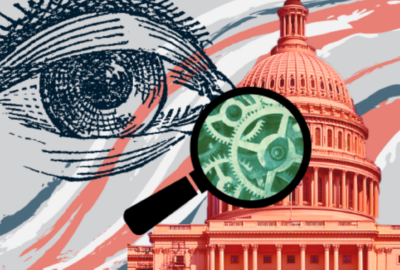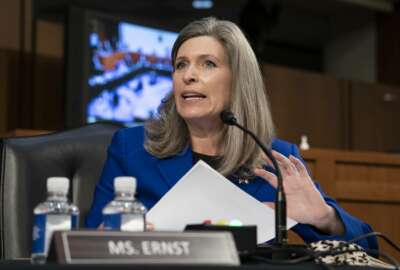NBIS delays, funding challenges cramp DHS progress on personnel vetting reform
DHS is trying to adopt more streamline personnel vetting and security clearance processes, but its progress depends on IT systems run by other agencies.
The Department of Homeland Security’s watchdog says a DHS shift to more streamlined personnel vetting practices is being hampered by governmentwide delays with new IT capabilities.
In a new report released this month, the DHS inspector general found the department had made progress with its progress in implementing an “enhanced” personnel vetting program for approximately 260,000 employees and tens of thousands of more contractors. DHS is implementing reforms as part of a governmentwide “Trusted Workforce 2.0” initiative.
Specifically, DHS has enrolled more than 259,000 employees in the FBI’s “Rap Back” system, which flags criminal activity. The IG found DHS accounts for one-third of the entire federal government’s Rap Back enrollment.
DHS has also adopted a “Continuous Vetting and Analytics Service.” The IG report describes it as an “enterprise solution for continuous vetting that uses a subset of artificial intelligence, specifically, robotic process automation to remove repetitive tasks allowing practitioners to process personnel and actions in a more efficient manner.”
DHS also recently deployed an online portal where department employees and contractors can self-report information such as foreign travel or criminal activity, according to the report.
But DHS officials told the IG that their reliance on other agencies for IT systems is a “challenge to full implementation” of Trusted Workforce 2.0.
For example, DHS uses a continuous vetting system overseen by the office of the director of national intelligence to conduct automated record checks of employees and contractors. The system currently covers employees with access to sensitive, national security-related information. As of May 1, the IG found DHS had enrolled approximately 198,000 employees in continuous vetting.
But the DHS IG reports that a planned expansion of the system to “non-sensitive public trust” and “low-risk” populations has been delayed until October 2024. That includes many positions relevant to DHS component agencies, including those in policymaking, public safety and health, and law enforcement.
Similarly, the IG found DHS can’t retire its legacy personnel security system due to delays with the “National Background Investigation Services” (NBIS) IT system. The Defense Counterintelligence and Security Agency oversees NBIS development. Defense Department leaders are expected to sign off on a new plan for NBIS this month.
“The [DHS] officials emphasized that additional functionalities planned for these systems are fundamental to their ability to fully implement Trusted Workforce 2.0,” the IG report states.
The IG report also found DHS has allocate funding to replace its legacy system, called the Integrated Security Management System. That IT system is expected to reach the end of its planned lifecycle by September 2025.
“[Office of the Chief Security Officer] officials stated they are working with the department to secure funding for the modernization of the Integrated Security Management System, which is critical to DHS achieving full implementation of Trusted Workforce 2.0,” the report states.
‘Mobility . . . remains a challenge’
Homeland Security Secretary Alejandro Mayorkas has said overhauling the department’s security clearance process is a major priority. In a recent interview, Mayorkas highlighted the challenges employees face in changing positions within DHS.
“Mobility within the department remains a challenge,” he said. “If somebody has received a security clearance in one agency, and they want to move to another agency, we still haven’t eliminated the redundancies entirely.”
The governmentwide reforms under Trusted Workforce 2.0 are partially intended to alleviate challenges with mobility by instituting a single, consolidated personnel vetting system. But DCSA’s challenges with the NBIS IT system and other continuous vetting capabilities have led to delays across agencies.
The most recent governmentwide update on Trusted Workforce 2.0 shows many milestones are “to be determined” until DoD approves the NBIS “recovery plan.”
“DoD believes these improvements will allow DCSA is to deliver the IT infrastructure and shared services needed to accomplish personnel vetting reforms,” the update states.
Copyright © 2024 Federal News Network. All rights reserved. This website is not intended for users located within the European Economic Area.
Follow @jdoubledayWFED






